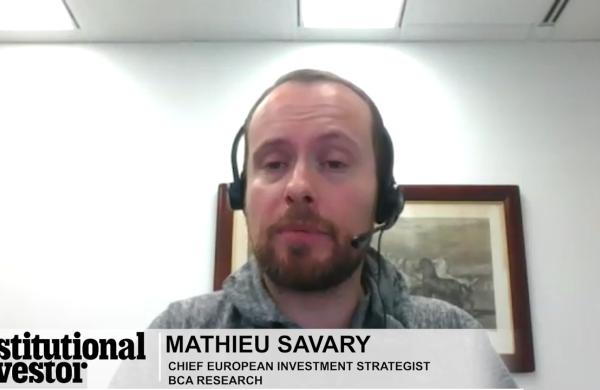With last month’s dramatic 125 basis points of rate cuts, Federal Reserve Board chairman Ben Bernanke has dispelled any concerns that he was a dithering academic insensitive to financial market distress. But his newfound activism is not without risks of its own. At stake is nothing less than the health of the $14 trillion U.S. economy — and perhaps the rest of the world’s as well.
One risk is that the Fed’s bold move may be too little, too late. The market is still pricing in a belief that the economy is, if not already in recession, heading for one — or at least a period of subpar growth that feels like a recession. Even after the latest rate cut, which brings the Fed’s cumulative easing to 2.25 percentage points since September, the Federal Open Market Committee stated in its January communiqué that “downside risks to growth remain,” suggesting its policy tilt going forward is toward more rate cuts.
“There is now a rising probability of a catastrophic financial and economic outcome — a vicious circle where a deep recession makes the financial losses more severe and where, in turn, large and growing financial losses and a financial meltdown make the recession even more severe,” says Nouriel Roubini, an economics professor at New York University’s Stern School of Business and chairman of the economics Web site RGE Monitor. “That is the reason the Fed had thrown all caution to the wind.”
The Fed’s prescription is eerily familiar, though. Easy money helped fuel the housing bubble in the first place, and the latest round of cuts could spark a rise in inflation and sow the seeds for future bubbles, skeptics warn. The yield curve has already steepened significantly, with ten-year Treasury yields easing just a quarter point over the past month and 30-year yields flat despite the 1.25 percentage point cut in the Fed funds rate, to 3 percent.
The Fed’s aggressive cuts “won’t arrest the recessionary dynamic now unfolding, but it could well set the stage for the next asset bubble in America’s bubble-prone economy,” writes Stephen Roach, chairman of Morgan Stanley Asia,
in a note to clients.
And add to those economic stakes a rather personal one. Chairman Bernanke, arriving at exactly the midpoint of his four-year term at the helm of the central bank this month, has essentially staked his claim to a second term on the rate decisions made last month.
There was no small irony in the Fed’s rapid-fire rate cuts. In recent months the chief criticism leveled at Bernanke and his colleagues on the Federal Open Market Committee was that their academic backgrounds made them too insensitive to the signals of extreme distress in the market and left the Fed persistently behind the curve. But in fact it is the FOMC’s so-called academics who have been at the forefront of the aggressive policy moves, and who pushed for the first 75 basis point reduction with a rare intermeeting move, just eight days before the committee’s regularly scheduled session.
Contrary to Wall Street’s somewhat narcissistic take on last month’s intermeeting move, Bernanke & Co. were not panicked into the cuts by the dictates of fragile markets baying for relief or snookered by the rogue trading antics of Société Générale’s $7 billion man. Sources say the FOMC had already been weighing an intermeeting cut in response to mounting evidence of economic weakness. Bernanke signaled such a possibility with a strongly worded speech on January 11 in which he said the Fed might need to be “exceptionally alert and flexible” to act in a “decisive and timely manner.”
The back story to the Fed’s new activist policy stance can be traced to then-chairman Alan Greenspan’s somewhat more instinctively argued rate cuts in the wake of the Long-Term Capital Management market meltdown in 1998, and the rapid rate cuts in 2001 after the bursting of the tech-stock bubble.
Greenspan dubbed his actions “risk management” for lack of a better description. To lend some institutional heft to Greenspan’s instincts, the Fed created a small Financial Stability group within the Monetary Affairs division to try to detect early warning signs of so-called tail-risk events in the financial markets that could spill over into the real economy.
Bernanke made his reputation as an academic with groundbreaking work that demonstrated how the Fed’s tight money policies contributed to the Great Depression in the 1930s. And mindful of the trauma of Japan’s deflation in the 1990s, Bernanke argued earlier this decade that the Fed needed to be ready to take dramatic action to avert the risk of U.S. deflation.
The theoretical case for the Fed’s new aggressive orthodoxy was articulated in a speech early last month by Fed governor Frederic Mishkin, a former Columbia University economist who, alongside Bernanke, has been the intellectual architect of the Fed’s response to the credit market implosion.
Mishkin argued that the Fed needed to guard against the risk that a disruption in financial markets might “set off an adverse feedback loop” in the economy. Fed policy should be “aimed at providing insurance to help avoid more severe macroeconomic outcomes,” he contended.
Mishkin was careful to add that the Fed needed to offset greater policy flexibility in times of weakness with a readiness to “take back some of that insurance in response to a recovery in financial markets or an upward shift in inflation risks.”
That point was crucial in winning over Fed hawks to the January rate cuts, sources say. As it was, one FOMC member, Dallas Fed president Richard Fisher, dissented against the 50-basis-point cut in late January, arguing for no change in the Fed funds rate.
It remains be seen how readily the Fed will tighten when the economy rebounds. This is a presidential election year, after all, and Democrats on Capitol Hill are holding up two nominations to the Board of Governors and one reappointment, confident they will win the White House in November.
The last time an acclaimed academic (Arthur Burns) was at the helm of the Fed, then-president Richard Nixon famously declared, “We are all Keynesians now.” Burns eased rates aggressively to stave off recession in the early 1970s, but monetary policy in hindsight was far too loose, contributing to the surge in inflation later that decade. The Fed, and investors around the world, will be hoping that Bernanke’s largely untried academic theory will prove more successful this time.





